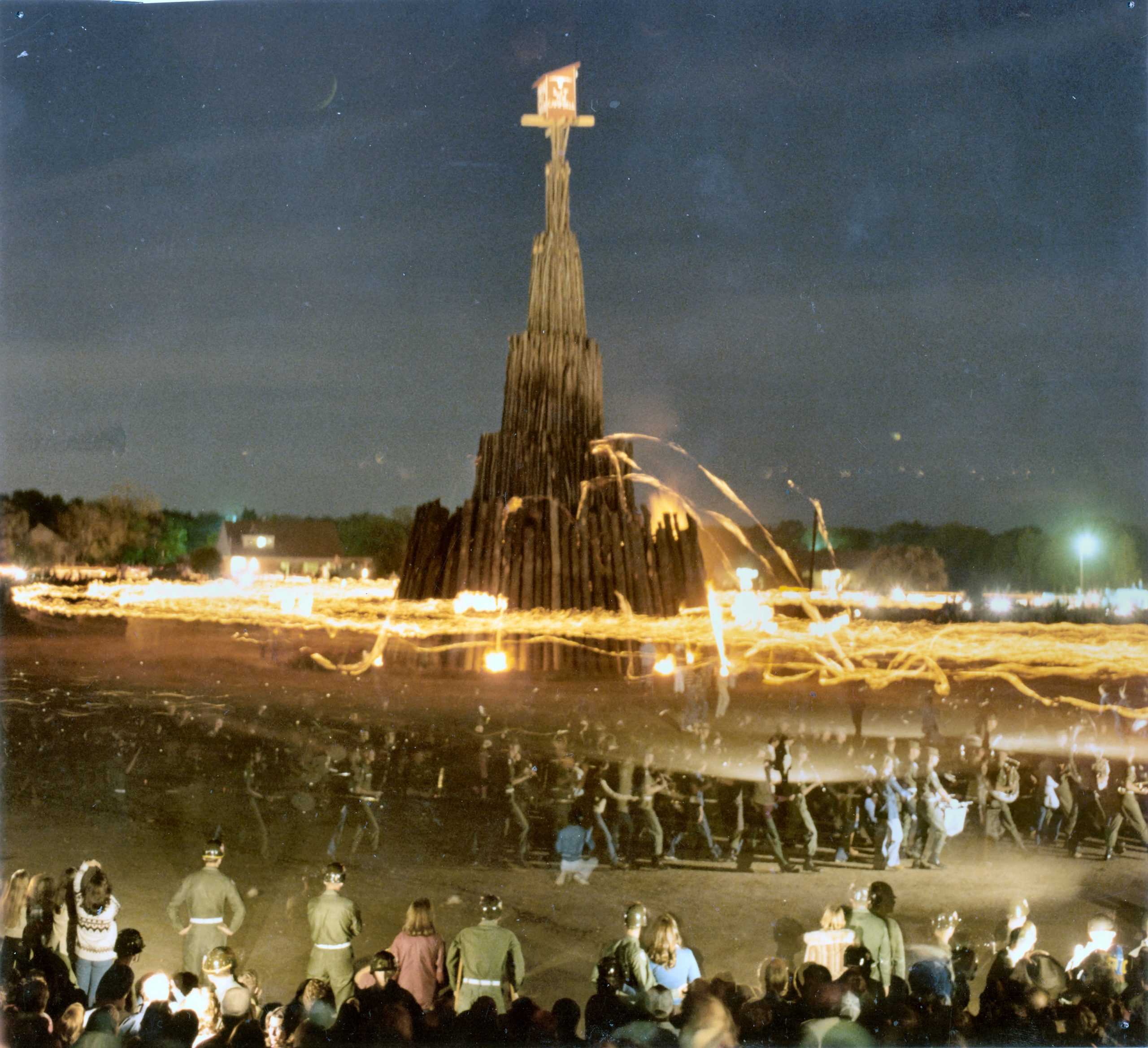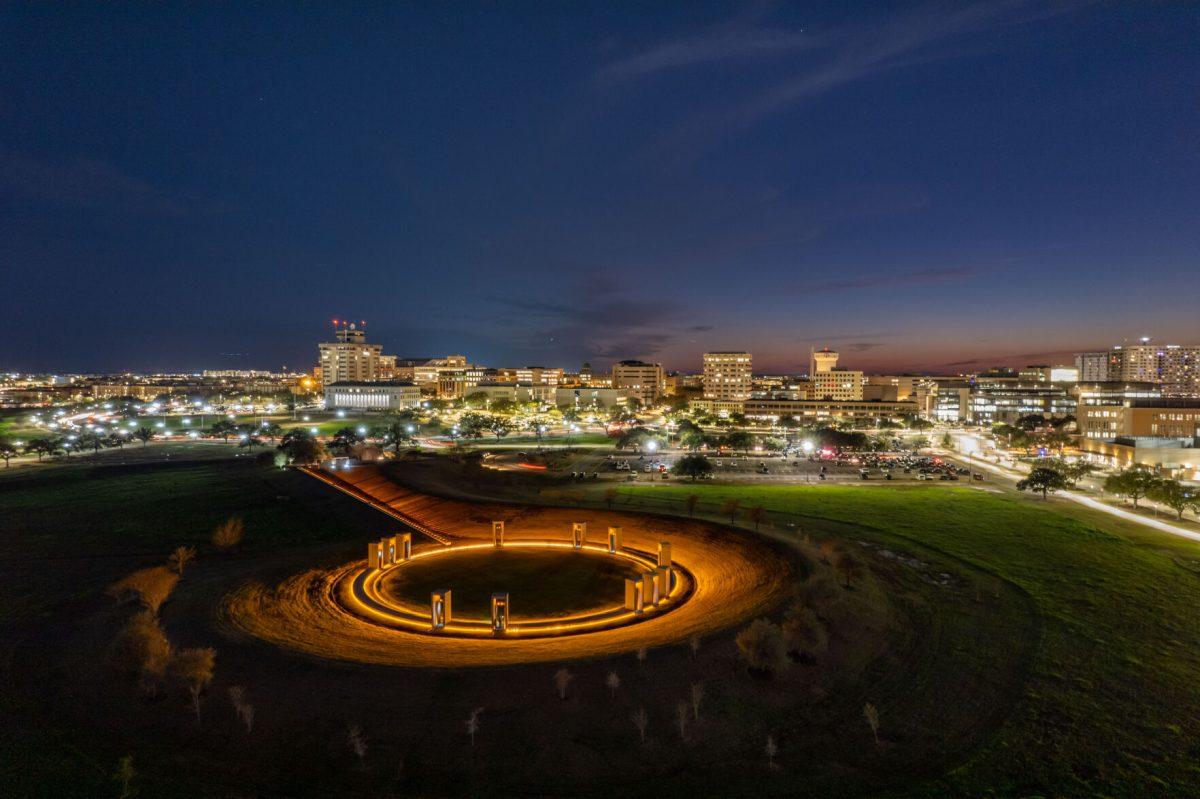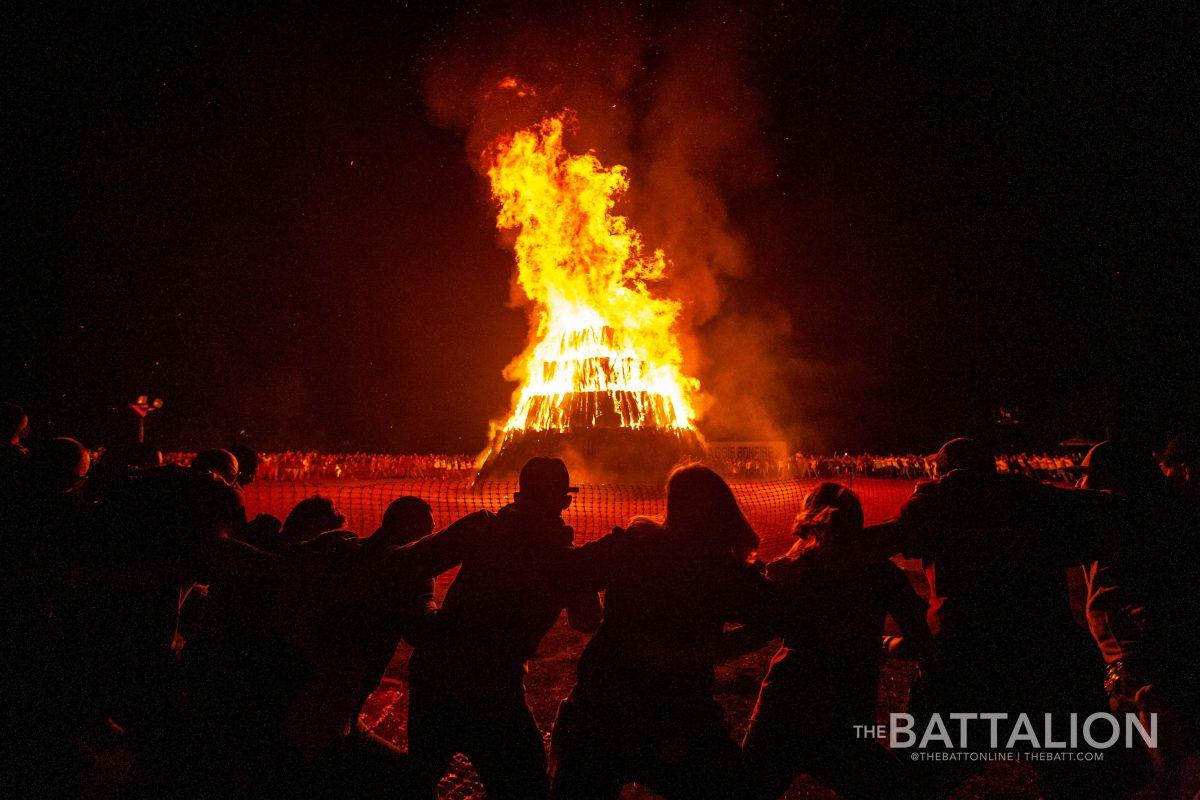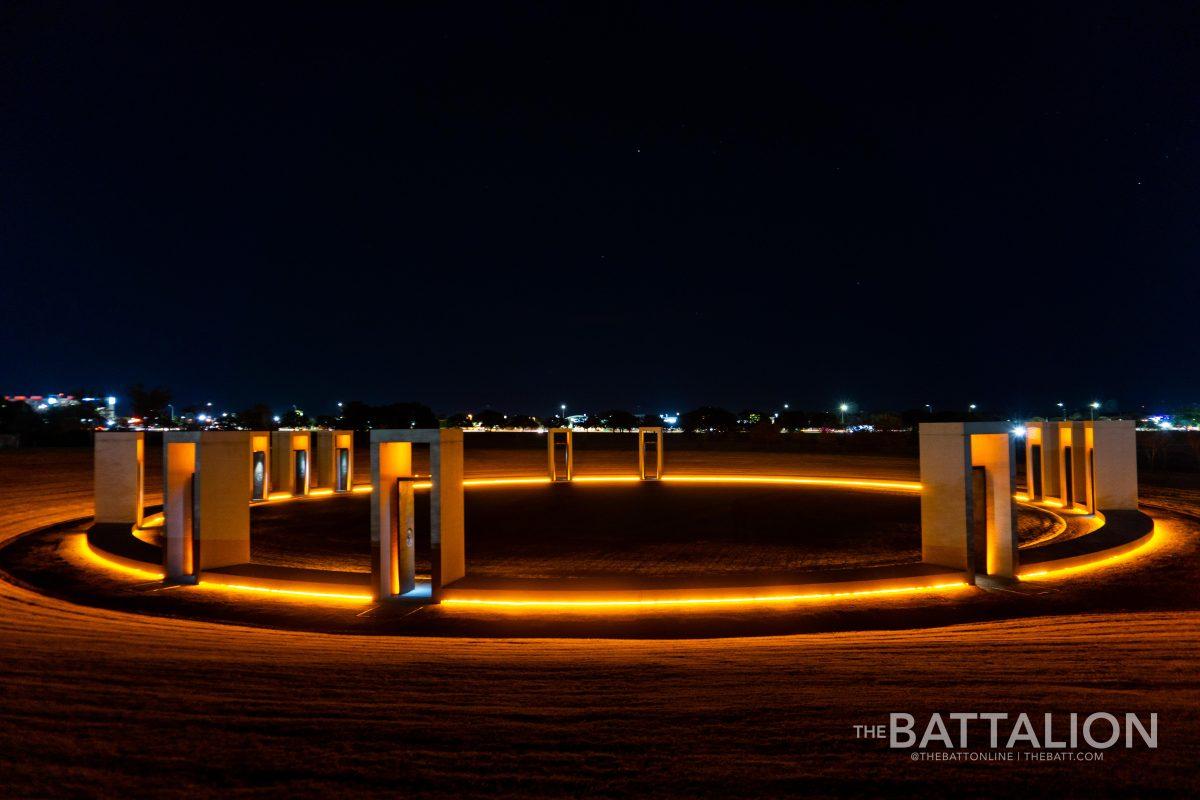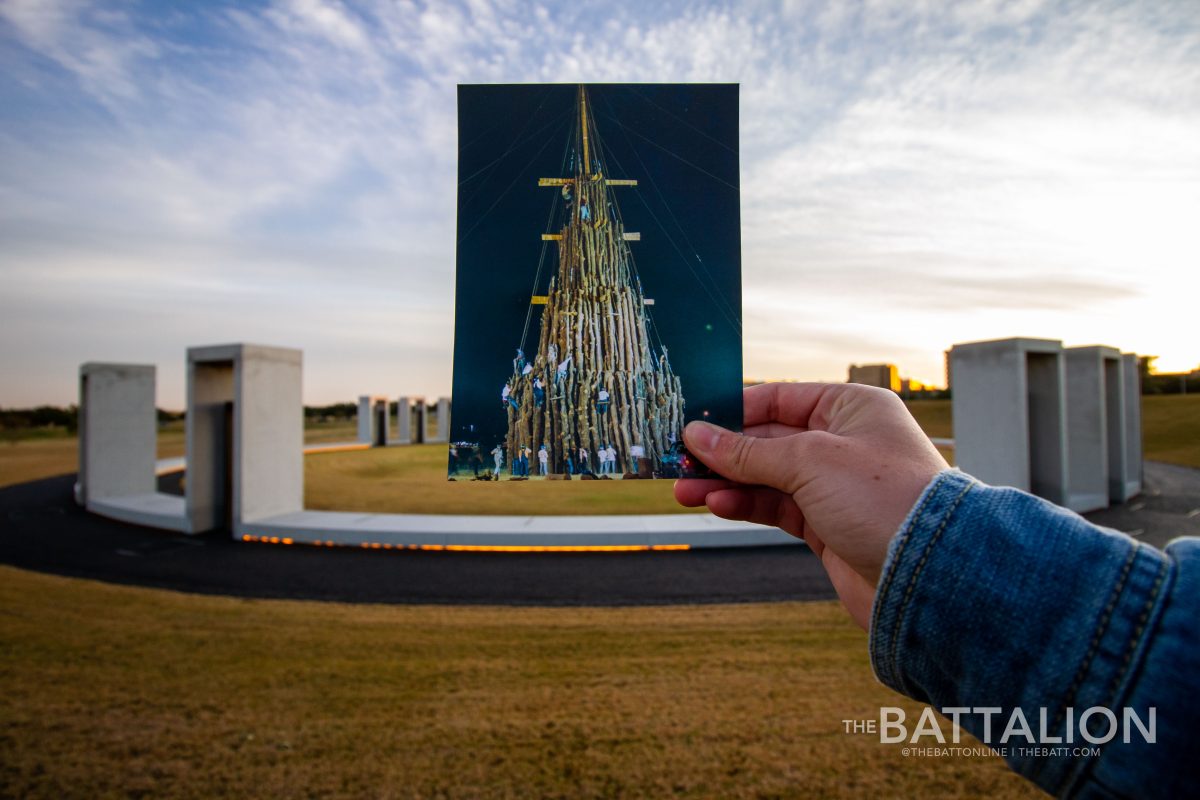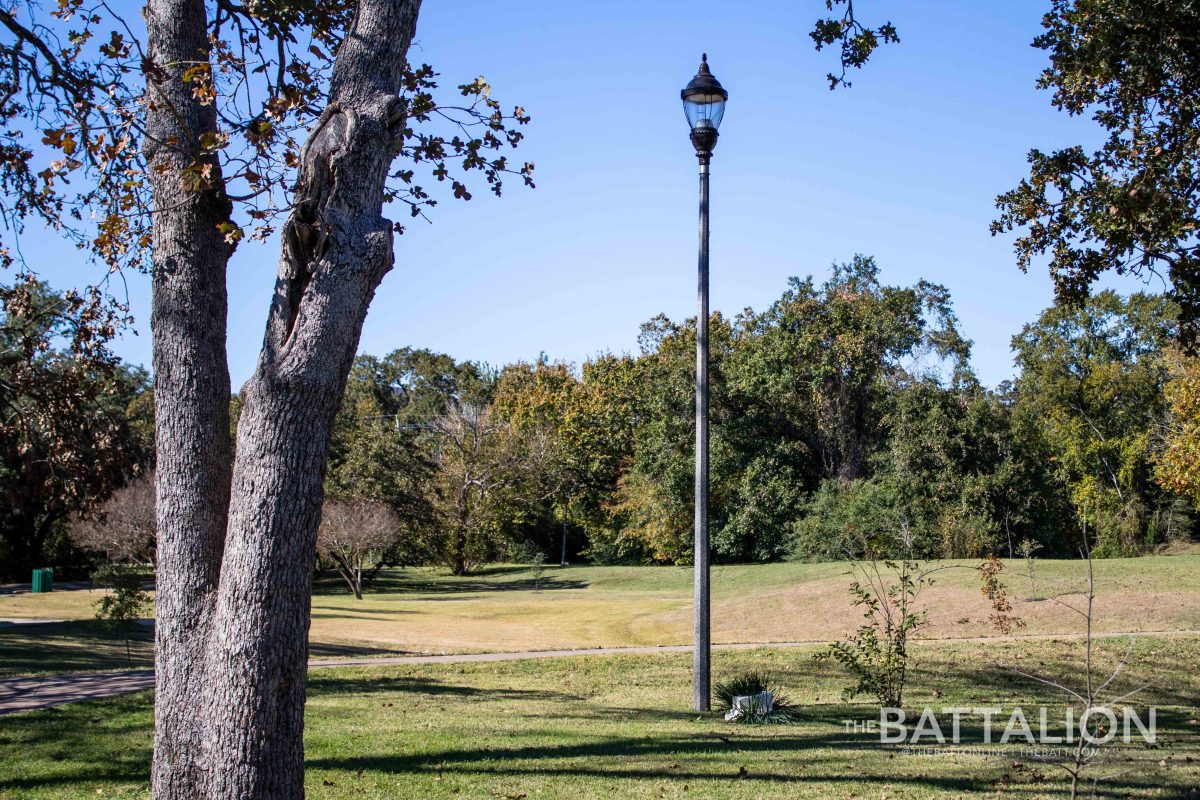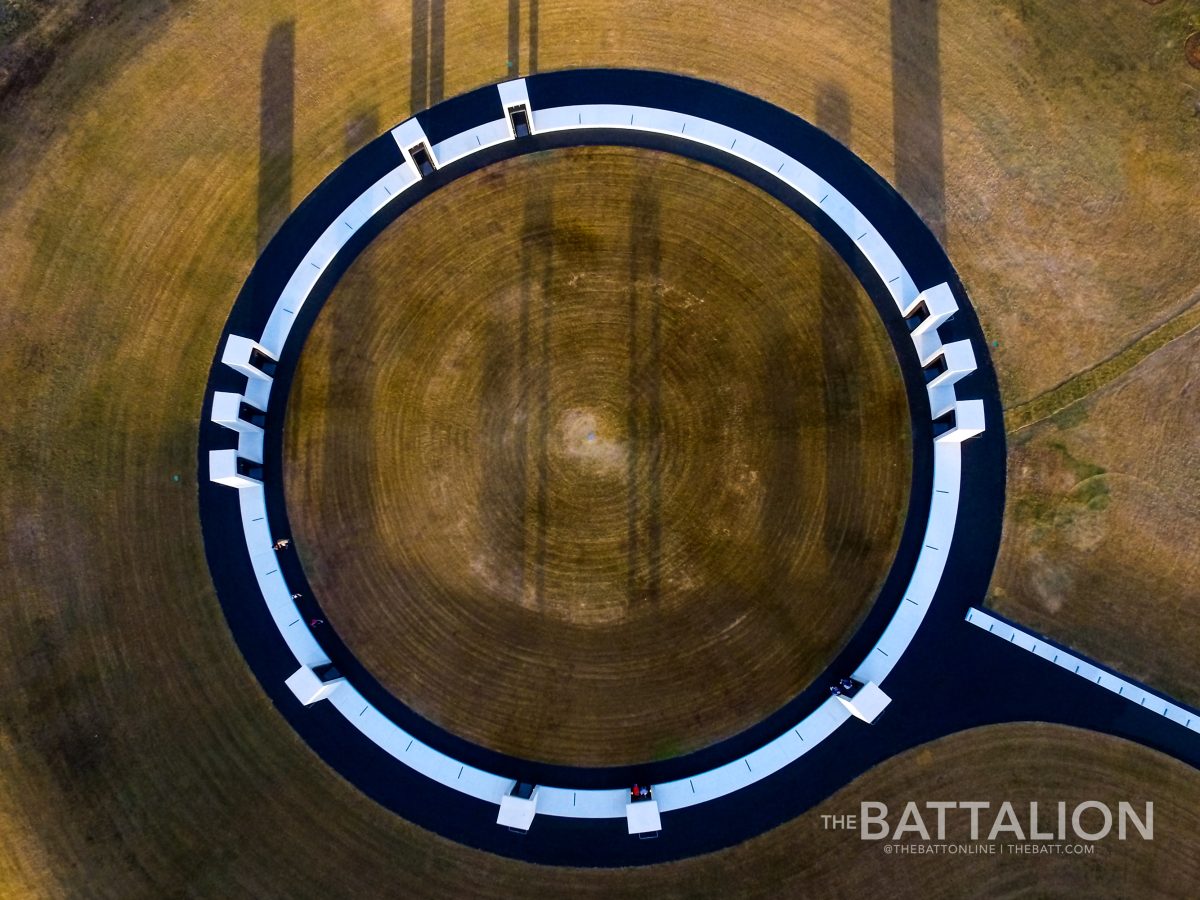Five to seven thousand wooden logs, close to 70,000 spectators and 92 years of tradition.
Twelve dead, 27 injured and a campus forever changed.
A group of Aggies spearheaded the Bonfire Memorial’s design to represent two sides of Texas A&M’s Bonfire — a tradition that united all Aggies in a cause greater than self, and a tragedy whose emotional scars continue to heal.
The story they tell will be remembered at 2:42 a.m. Tuesday morning. But the story behind their decision to help heal a university just three years removed from the Aggie Bonfire Collapse of 1999 represents the Aggie Spirit as much as the tradition they immortalized.
A Texas Cause
Robert Shemwell, Class of 1982 and one of the Bonfire Memorial architects, best remembers Bonfire as a freshman. He lived in Crocker — one of several dorms where Hullabaloo Hall now stands — and participated in either construction or Burn all four years of his undergraduate life.
“So you pile out of your dorm room at 6 a.m. on a Saturday and go out into the woods and the mud and carry trees around with someone from the fourth floor of your dorm who you would have never met, except that you spent a weekend together hauling logs through the forest,” Shemwell said. “And because of that, they were friends the rest of the time you were at school, and many times well beyond that.”
Shemwell is a principal with Overland Partners, the San Antonio architecture firm responsible for the memorial. In 2002, the majority of Overland’s workers graduated from Texas schools. Thirty were evenly split between A&M and University of Texas graduates, along with a scattering of Texas Tech and out-of-state alumni. Overland eventually won a Texas A&M design competition to build the memorial.
“It captured people’s hearts because, whether you were on one side of the rivalry or the other, we’re all Texans,” Shemwell said. “And it hits home. It’s like something happened to part of your family.”
Shemwell approached two other former students to help show the office what Bonfire meant to A&M and help convey a sense of the Aggie Spirit. The trio hosted several lunch brainstorming sessions with other Overland staffers to plan out the memorial’s scope.
One of the architects, Ryan Jones, Class of 2000 and former cadet in Spider-D outfit, talked about his memories with Bonfire as a “gritty” experience that formed lasting friendships. He also sought to describe what it meant to wear the Aggie Ring.
“I talked about the Aggie Spirit, and the symbolism of the Aggie Ring, and how we all feel — one of the things about being an Aggie is that you always feel like you are part of something bigger than yourself,” Jones said.
Fernando Ortega, UT Class of 1982, was one of the architects who listened to Jones and the other Aggies. The first thing he did when he heard of the 1999 Stack collapse was call a friend whose daughter attended Texas A&M to make sure she was safe.
“I think for Texans, it’s kind of like, ‘Where were you when you heard of the Bonfire collapse?’ It affected everybody,” Ortega said.
A theme that stood out to Ortega from Jones’s story was a circle — the shape represents both Bonfire and the Aggie Ring, and he suggested the memorial incorporate it as a symbol.
“One of the things that resonated was the idea [of] how everybody would come together at wBonfire in this sort of perimeter ring,” Ortega said. “To some that became a haunting image of remembering how close everybody got to the bonfire.”
Designed to Heal
Ortega’s suggestion is now seen in the memorial’s perimeter ring, and is the first in a series of careful design choices the Overland team made to symbolize the tradition and tragedy of Bonfire. Several challenges, however, soon had the team struggling to meet its deadline — Overland had less than 16 months to design and construct the memorial before a planned 2004 dedication ceremony.
Shemwell said one of the project’s most difficult aspects was working with the Bonfire victim families to design a suitable tribute. The families were mourning, and some still demanded answers from Texas A&M as to why their sons and daughters died.
“There were families that were suing the university, there were families that were divorced before the accident, there were marriages broken up because of the accident,” Shemwell said. “There were lots and lots of high-pressure, emotional dynamics that were associated with this.”
Meetings between the families and the architects at times had to be split up because some of the family members would not sit in the same room together. Artist sketches made from photographs and a victim’s clothing were sometimes rejected or criticized, and the process would repeat.
A full-scale portal mockup was built at Overland, and for three months family members would visit the office to walk through and provide feedback. Shemwell said the Stack collapse was still painful for the families who had lost sons or daughters, but he and the rest of the team hoped their work could somehow continue the healing process.
“We set this out as a goal in the office, ‘This is a terrible tragedy. Can the way that we do our work — not just the work, but the way that we do our work, the way that we engage with the families, the way that we engage with the university — can those be part of the healing process? Can those be things that are formats for reconciliation?’ I like to think that it did some of that, and I believe it did,” Shemwell said.
15 Years Later
Every challenge was met and overcome, however, in what Shemwell said was a process that mirrored Bonfire itself.
“There are projects that put their stamp on you, that change the office, that change the people that are involved,” Shemwell said. “It rallied the office together in a way that was very powerful, that changed the way that people thought about their work, that brought them together, and helped to touch a lot of people in a way that was significant.”
Jones said the memorial is as much about remembering the Aggie Spirit that built Bonfire as it is about mourning the tragedy that occurred in 1999.
“I would say the Bonfire memorial is less about Bonfire than it is about who we are and what makes Aggies special,” Jones said. “To me that’s what we wanted to focus on. Bonfire wasn’t a thing, an event, but it was the camaraderie, the willingness to serve, the willingness to be a part of something larger than yourself. The reason you come to A&M is you want to be a part of that community; you want to be a part of that family.”
Shemwell spoke to a student lecture hall before the memorial’s dedication. He told those in attendance that the Aggie tradition is not formally taught — it is passed down by example. To Shemwell, remembering Bonfire will be done in the same way.
“What I told the audience is, you guys were here and you got to hear from the design team’s perspective how this came together, what was important to us,” Shemwell said. “Now you’ve got a responsibility to carry that story forward.”
Tradition and tragedy
November 16, 2014
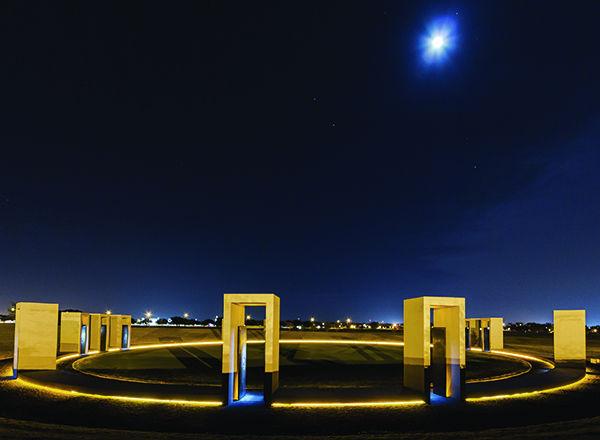
Donate to The Battalion
Your donation will support the student journalists of Texas A&M University - College Station. Your contribution will allow us to purchase equipment and cover our annual website hosting costs.

















